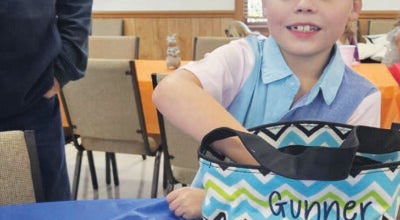The tale of a lost hummingbird
Published 10:56 am Thursday, December 17, 2015

- This hummingbird was seen in Bermuda Run in early September.
BERMUDA RUN – Chances are that Fran Shelton and her neighbors have been on the lookout for hummingbirds in recent weeks.
A member of the Bermuda Run Garden Club, Shelton wrote the following article last year when she spotted a hummingbird in her yard – months after they were all supposed to have flown south for the winter.
“Last Dec. 6, I started my regular morning routine of getting up, going into the kitchen, putting on the coffee and opening the blinds facing my backyard.
As I opened the blinds, a tiny bird zoomed by. “A hummer? No way. I better go put on my glasses,” I thought. After getting my glasses, I settled on the chaise by the window to enjoy my coffee. When I looked out the window, there was a hummingbird bathing in my heated birdbath which had ice all around the edges of the water.
When I looked more closely, I realized it was not a Ruby-Throated Hummingbird, our summer resident, but a bird I could not identify.
I got out the stored-away feeder, made sugar water and put it out. The bird immediately started enjoying it and fed there all day.
However, when I opened the blinds the next morning, the bird was trying to drink from the feeder which was frozen solid. What to do?
I emailed Susan Campbell, a hummingbird researcher associated with the N.C. Natural History Museum and asked her. She told me to get a heat lamp and put it on the feeder pole so the sugar water would not freeze and that she would come and band the bird.
This little band she would put on its leg would give researchers information about hummingbird migration patterns when the bird was seen again.
Susan came with her researcher’s banding paraphernalia.
She put a cage on a stool in front of the feeder. The cage had a door which she could hold open with the string she tied to it. She put the feeder inside the cage, opened the door with the string, backed away and waited. The bird flew right in and started to drink.
Susan closed the front door, put her hand through a smaller door on the side of the cage and put a small soft cloth around the bird. She then sat at my kitchen counter and examined it, measured it, weighed it and identified it as a female Rufous Hummingbird, a western species.
She put on her ankle bracelet, took her outside and put her in my hand to let her go.
My heart raced and my hand trembled as I felt her heart beating very fas t- it can beat more than 1,000 beats per minute.
She stayed with me until Dec. 27, when the wind/weather came from the north, giving her a tailwind south. I hope she was sipping from beautiful flowers somewhere in Mexico or Panama by Dec. 28.
Maybe she’ll be back again this summer or next December. If you see a hummingbird with an ankle bracelet – let me know.



